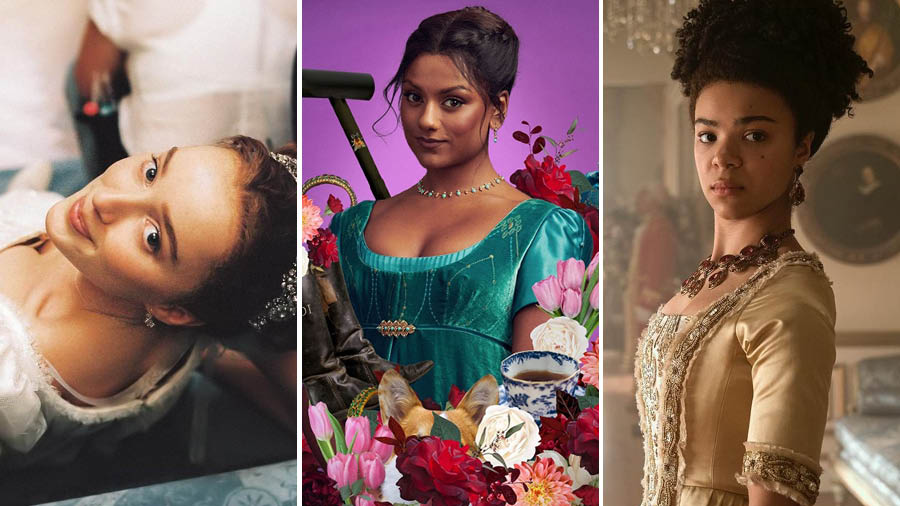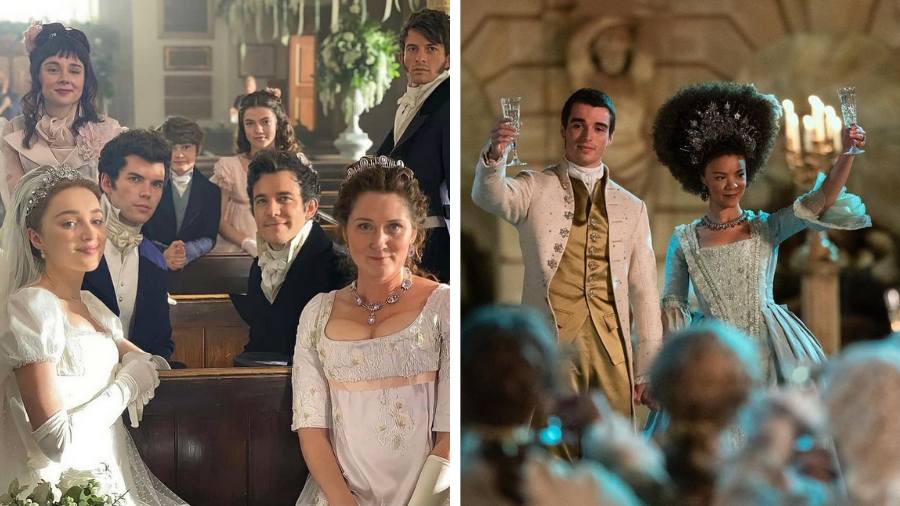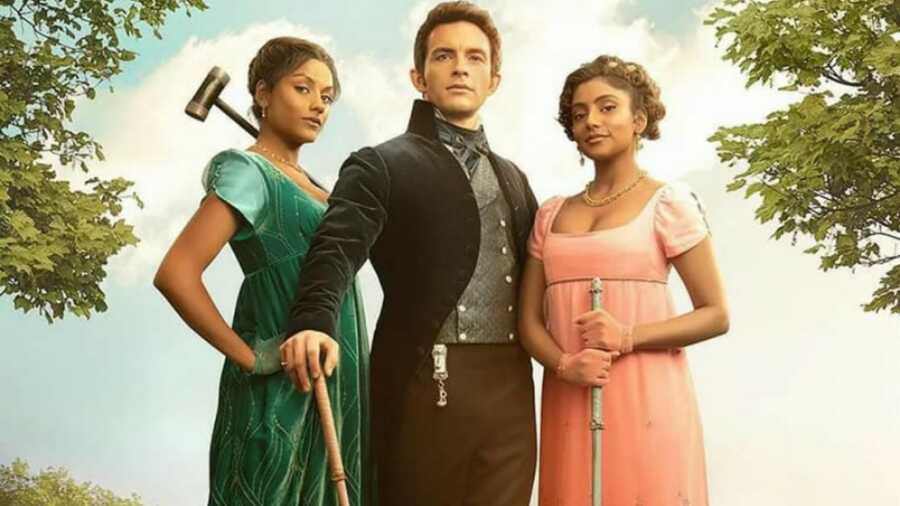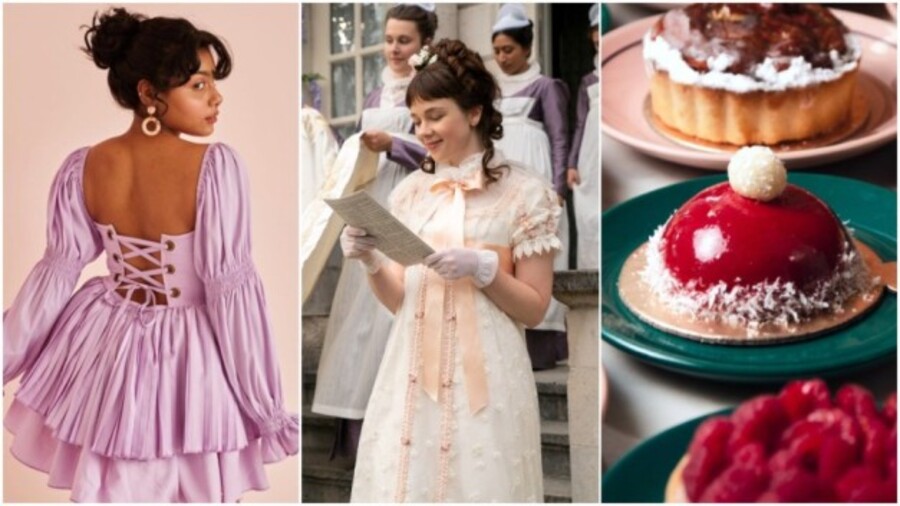A Regency-era rom-com with drama, beauty and passion? The Bridgerton series and its spin-off Queen Charlotte: A Bridgerton Story already had the basic formula for popularity before they ever hit our screens. However, through the two seasons of Bridgerton and recently Queen Charlotte, there’s a lot more to these shows, which has made them resonate with a wide demographic of audiences, especially the younger generation of viewers.
Credit must be given first to the writer of the books, from which the series is inspired, Julia Quinn. Quinn’s storylines have just the right mix of romance, relevance and drama, with a good dose of passion to lure in lovers of romance. With intriguing plots, multi-natured characters, swoonworthy heroes and brave yet demure heroines, Quinn manages to bring in all the tropes of romance. When that merges with the Shondaland version of grand, passionate romances, the adaptations only cast the net of appeal wider.

L-R: Charlotte and George in ‘Queen Charlotte’, Kate and Anthony in ‘Bridgerton S2, Daphne and Simon in ‘Bridgerton’ S1
We look into a few reasons why these shows set in a different era have become Netflix’s most popular series…
The grandeur of it all
Both shows, with their lavish production values, exquisite costumes and set designs, offer a visual extravaganza that captivates audiences. The visually stunning series goes above and beyond in recreating all the grand and aspirational elements of the Regency era. From the Jane Austen-esque ‘wide environs’ to opulent sets, and luxe costumes, they succeed in transporting viewers into a world of high society parties and elegance. It might be relevant that the titular show’s first season premiered in the middle of the pandemic — a time when virtual escapism was welcome.
Every scene and setting is a treat for the eyes, with intricate and detail-oriented set pieces, relevant yet luxe costumes and breathtaking cinematography. The grand ballrooms or the intimate drawing rooms, combined with the way scenes are shot to keep them expansive or intimate, appeal to viewers’ sense of escapism. The locations give the show bonus points, featuring locations like Ranger’s House in Greenwich in southeast London, which is the exterior of the Bridgerton home, features elegant Georgian architecture, while the outside of the Featherington houses shot in the iconic 18th-century Royal Crescent in Bath.
As for the costumes, the elaborate lace-embroidered gowns and the tailored suits and waistcoats for the gentlemen are nothing short of being works of art. Be it Daphne Bridgerton’s pastel-coloured ball gowns or King George’s impeccably tailored coats, every element adds to the visual appeal and grandness of the shows.
Stellar performances
The performances of the ensemble give their character depth and emotional range, allowing them to develop and change over time. The casting is perfect, and once viewers are introduced to a character, it is difficult to imagine anyone else playing the role. With each actor bringing their unique acting style to the table, they elevate the storytelling too. Special mention must be made for the casting of Queen Charlotte. India Amarteifio, who plays the younger Charlotte to Bridgerton’s Golda Rosheuvel not only emulates the mannerisms of her show predecessor, she brings her own elements to it, which makes the complete arc much more believable. The attention to detail and the commitment of the actors towards the characters make the audience emotionally invested in their journeys.
Fearless, strong heroines

L-R: Daphne Bridgerton, Kate Sharma and Queen Charlotte
The stories have also gifted the viewers with a plethora of strong, multidimensional female characters, who challenge the social norms of their time, making them more interesting and relevant to a modern audience.
All three lead female characters — Daphne Bridgerton, Kate Sharma and now Queen Charlotte — have navigated the complexities of love and relationships in a restrictive society in their own way. Yet, each character has shown defiance and also personal growth. Whether it is Daphne Bridgerton’s tenacious battle for personal fulfilment or Eloise’s rebellion against the societal mould, or Charlotte’s resilient battle to own and earn her place, every female character is much more than a pretty face.
Queen Charlotte particularly shows us complex multi-layered characters, while tackling many important subjects like female desire and ageism. of Shonda Rhimes. Queen Charlotte alone challenges the notion that women of a certain age — very young, newly married, older — must disappear into the background, with her confidence and authority. Queen Charlotte's storyline explores her ambitions and complexities beyond her age. She engages in political intrigue, navigates complex relationships, and demonstrates resilience in the face of adversity. Along with that it also discusses the desires of other ladies of the older clan. It is particularly refreshing when Violet Bridgerton discusses the possibility of feeling sexual urges with Lady Danbury as it challenges the idea that older people don’t have a place in their life for desire.
The tunes
Another major strength has been the music used in the productions. The soundtrack features unique classical covers of rock and pop songs, from Nirvana’s Stay Away, Miley Cyrus Wrecking Ball and Harry Styles’ Sign of the times to Ariana Grande’s Thank u, next, and Bollywood’s own Kabhi khushi kabhie gham. This blend of old and new defines the very essence of this modern, Regency-era drama. It bridges the gap between different generations, by staying true to the era it is set in. while resonating with those familiar with contemporary hits. The soundtrack’s success extends beyond the show itself, as it achieves commercial acclaim, attaining high positions on music charts and accumulating millions of streams on platforms like Spotify.
The selection of pieces, and their transformation into jolly or haunting classical versions plays a vital role in establishing the desired mood and tone, enhancing the emotional impact of key scenes.
A diverse universe
What had the viewers talking right from season one of the show was the racially diverse cast, breaking away from the traditional whitewashed period dramas. A colourblind Regency-era where the queen of England is a black woman, a mixed-race noblewoman marries an Indian commoner instantly mirrors the world around us today. The shows don’t always get it right, like in season two of Bridgerton, where Kate and Edwina Sharma’s confusing Indian heritage makes it seem like the family was from all over the country. However, with its diverse casting choices, the show resonates with viewers who seek inclusive storytelling.
Inclusivity and diversity is not limited to just casting. No character is left behind without a story to tell. While the lead pairs with swoon-worthy leads emulate every romance trope from enemies-to-lovers and fake dating to marriage of convenience, the supporting characters of each season and show have equally intriguing stories. Whether it’s the Queen’s aid or the person who runs the local pub, every character contributes something substantial to the overall plot. After all, the forbidden, secret, queer love story of Reynolds and Brimsley, the king’s and queen’s aides, nearly stole the show despite the central story being engaging throughout.
The popularity of the series lies in its capacity to provide a novel perspective on oft-told stories. The Bridgerton universe brings together the romance of a bygone era with the zeal of a modern one, creating a space in the hearts of a whole range of audiences.


